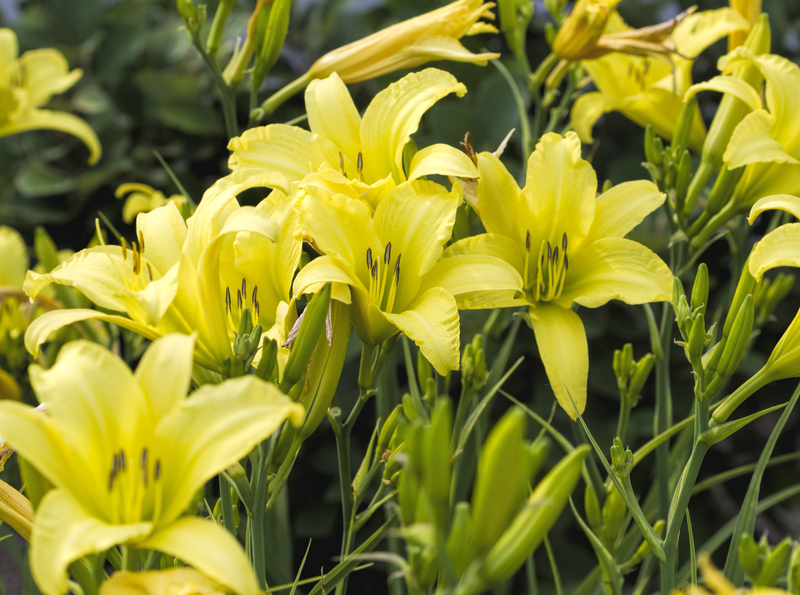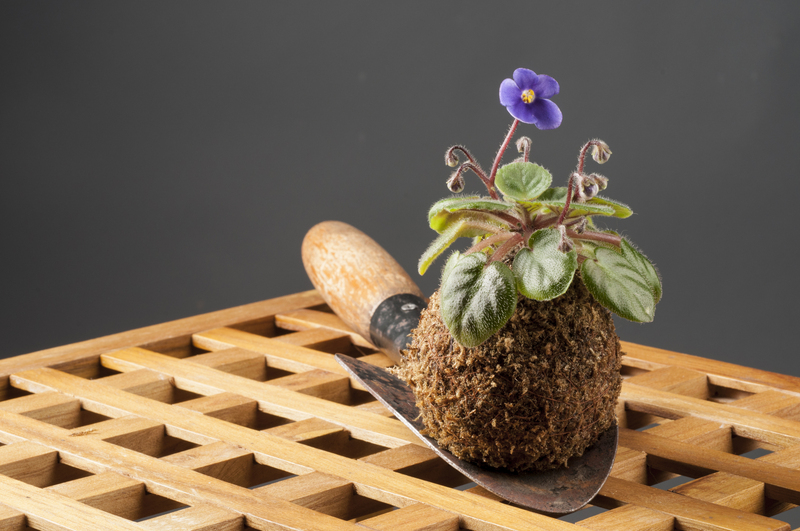Hedge Trimming: From Basics to Beautiful Forms
Posted on 28/05/2025
Hedge Trimming: From Basics to Beautiful Forms
Hedge trimming is not just a gardening chore; it is a transformative process that adds definition, elegance, and structure to your landscape. From neat garden boundaries to spectacular topiary art, hedge trimming can elevate your outdoor spaces from ordinary to extraordinary. In this comprehensive guide, we'll walk you through the essentials of hedge maintenance, explore advanced methods, and share tips for creating beautiful hedge shapes that will make your garden stand out.
Understanding Hedge Trimming
Before diving into intricate shapes and advanced techniques, it's essential to master the basics of hedge trimming. Well-maintained hedges do more than demarcate property lines.
- They provide privacy and wind protection
- Add structure and texture to your landscape
- Create beautiful green backdrops for gardens and pathways
- Offer habitats for birds and other wildlife
What Is Hedge Trimming?
Hedge trimming involves cutting and shaping shrubs and small trees into tidy, functional, or decorative hedges. Regular trimming helps keep plants healthy, encourages dense growth, and maintains the desired size and shape.
Types of Hedges
When considering hedge pruning or hedge cutting, knowing your plant species is key. Some common hedge types include:
- Evergreen hedges: Boxwood, Yew, Privet, and Holly
- Deciduous hedges: Hornbeam, Beech, and Hawthorn
- Flowering hedges: Forsythia, Rose, and Hydrangea
Note: Each type of hedge has its own growth pattern and pruning requirements. Always research your plant before you trim.

Essential Hedge Trimming Tools
High-quality tools are essential for creating clean cuts and healthy plants. Your hedge shaping toolkit should include:
- Hedge shears - for manual trimming of small hedges and fine shaping
- Electric or petrol hedge trimmers - for quick trimming of large hedges
- Pruning saws - ideal for cutting thicker branches
- Loppers - for removing old or woody stems
- Protective gloves and safety goggles - to keep yourself safe
Always keep your blades clean and sharp for best performance and plant health.
The Basics of Pruning and Trimming Hedges
When to Trim Hedges
Timing is crucial in hedge maintenance:
- Evergreen hedges are best trimmed in late spring or early summer, after the new growth has matured.
- Deciduous hedges can generally be pruned in late winter or early spring, before new shoots appear. Some varieties benefit from a summer tidy-up.
- Flowering hedges should be pruned right after their blooms fade, to avoid cutting off next year's flowers.
How Often to Trim Hedges
Frequency depends on the plant's growth rate and your desired appearance. Fast-growing species may need several trims during the growing season, while slow growers might only require annual maintenance. Regular trimmings encourage bushier, healthier hedges.
Trimming Techniques
- Use a string line or stakes as a guide to achieve straight, level cuts - essential for formal hedges.
- Angle the sides so the base is slightly wider than the top. This "A-shape" ensures sunlight reaches the lower branches, reducing bare spots.
- Work from the bottom up, moving slowly and making small, even cuts. Step back frequently to assess symmetry and proportion.
- Remove dead or diseased branches first, then tackle shaping and size reduction.
From Line to Form: Creative Hedge Shaping
Once the basics are mastered, hedge shaping opens a world of creative possibilities. Whether you prefer crisp formal lines or whimsical curves, here's how to get started:
Formal Hedges
Formal hedges are trimmed for symmetry and precision, ideal for boundaries or garden rooms. They are typically shaped into straight lines, flat tops, and sharp angles, sometimes with carefully curved edges.
- Maintain symmetry by measuring frequently and using guides.
- Trim little and often to preserve a crisp appearance and minimize shock to the plant.
- Choose dense, small-leaved species like boxwood or privet for best results.
Informal and Naturalistic Hedges
Informal hedge trimming emphasizes the plant's natural shape, with gentle curves and varying heights. This style is perfect for country gardens and wildlife-friendly landscapes.
- Follow the plant's growth pattern when shaping.
- Remove only wayward or crossing stems for a tidy, but soft look.
- Allow flowering or berry-producing stems to grow and bloom for added interest.
Topiary: Artistic Hedge Trimming
Topiary is the art of sculpting hedges and shrubs into geometric shapes or whimsical forms--spirals, balls, animals, and more. While it requires patience and precision, the results are spectacular.
- Start with a wire frame if attempting complex shapes, or sketch out your design before you begin.
- Use slow-growing, dense-foliage plants, like boxwood or yew.
- Trim gradually, allowing the shape to fill in between prunings.
- Maintain regularly to keep the form crisp and clear, particularly during active growth periods.
Expert Tips for Healthy, Beautiful Hedges
- Sharpen your tools before every session. Dull blades cause ragged cuts, increasing the risk of disease.
- Disinfect your blades when moving between plants to prevent the spread of pests and diseases.
- Avoid heavy pruning during very hot or cold weather. Extreme conditions can stress plants and slow recovery.
- Water and mulch your hedge after trimming to help it recover and promote healthy regrowth.
- Feed your hedge with a balanced, slow-release fertilizer in spring.
Consistency is key in hedge care--regular trims, at the right time, lead to lush, healthy, and visually appealing hedges.
Troubleshooting Common Hedge Trimming Problems
Dealing With Patchy, Sparse Hedges
Patchy hedges are often caused by insufficient sunlight, excessive pruning, or poor soil. To remedy:
- Thin the top growth to admit more light to lower branches.
- Prune moderately and encourage new shoots from the base.
- Enrich the soil with compost and mulch to support vigorous growth.
Reviving Overgrown Hedges
Overgrown hedges may need rejuvenation pruning:
- Deciduous plants tolerate hard pruning--cut back to 15-30cm above ground in late winter or early spring.
- Evergreens should not be pruned below old wood with no leaves, as most cannot regenerate from bare stems.
- Prune gradually over two to three years for the least stress and best results.
Preventing Disease and Pests
Keep hedges healthy by:
- Trimming when plants are dry to prevent fungal issues.
- Removing dead material promptly.
- Inspecting for scale, aphids, and mildew after trimming.
Safety Tips for Hedge Cutting
- Wear gloves and goggles to guard against thorns, debris, and flying branches.
- Use ladders safely. Place on firm, level ground, and never overreach.
- Keep trimmers and saws out of reach of children, and unplug electric tools before maintenance.
- Be mindful of birds' nests during trimming season. The UK's Wildlife and Countryside Act restricts hedge cutting during peak nesting periods (March-July).

Environmental Benefits of Proper Hedge Trimming
Well-maintained hedges are powerful allies for biodiversity and environmental health:
- They provide nesting sites for birds and shelter for insects and small mammals.
- Help absorb pollution and reduce noise in urban areas.
- Support pollinators by hosting flowers and berries.
- Prevent erosion and buffer wind in open landscapes.
Final Thoughts: Achieving Beautiful Hedge Forms
From simple maintenance to ambitious shapes, hedge trimming transforms functional garden boundaries into living works of art. With patience and practice, anyone can learn the fundamentals of hedge shaping and achieve healthy, beautiful hedges that enhance their property for years to come.
Remember: Start small, use the right tools, trim at the appropriate times, and respect the needs of your specific plants. Whether you dream of formal lines, flowing curves, or imaginative topiary designs, a well-trimmed hedge reflects both the character of your garden and your creativity as a gardener.
Embrace the art of hedge trimming--from basics to beautiful forms--and watch your garden flourish like never before.



